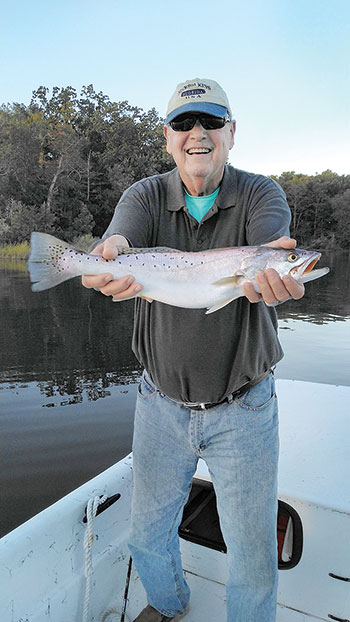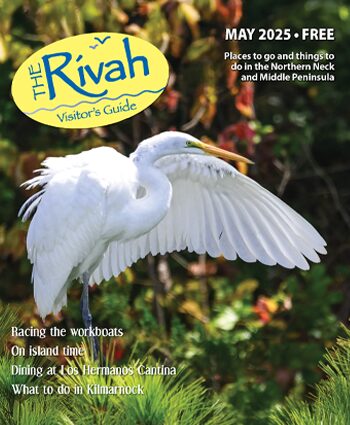The warmth of spring has begun to rejuvenate the Virginia Chesapeake Bay and its tributaries. Hopeful anglers are preparing their gear for the start of the season as they await further movement of fish into the region.
Shallow water locations rich in marshes and sea grasses will be the first to warm and hold notable quantities of fish. A variety of species take up residence as the season matures- making the Northern Neck an angler’s paradise.

Spring marks the spawning run of striped bass, locally known as rockfish. These prized fish use the bay’s upper tributaries as their primary spawning grounds. With the recent changes to the striped bass season, anglers don’t have the opportunity to land the large rockfish until May 16. At that time, the limits are set at one fish of 19-24 inches in length per person.
Tautog, another spring favorite, peaks in March and is mostly found around the Chesapeake Bay Bridge Tunnel or around wrecks and structure in the mid-bay. Green crab works well at the business end of a stout, sharp hook and strong, low stretch line. Tog limits are four per person with a 16-inch minimum. The season closes May 15.
Speckled trout fishing in the tributaries heats up this month as these beautiful fish become more active and provide a thrilling challenge for anglers. Speckled trout, or sea trout, tend to feed in warmer waters during the spring transition. They are often found in water depths of less than six feet. During this time, they may move a bit slower than in the hotter months, so adjusting your retrieve to a slower pace can be beneficial. The ideal temperature range for them is 68-70 degrees.
Lures
When it comes to lures, the vast majority of speckled trout fishing is done with a leadhead jig tipped with a twister tail or small shad body. The jig should be heavy enough to bounce along the bottom but not so heavy that it fails to mimic natural prey. Swimming plugs and surface chuggers are also utilized after the waters warm and entice more aggressive feeding habits. In terms of bait, peeler crabs, soft-shelled crabs, fresh shrimp, bloodworms, and cut fish are among the best choices. At times, live spot or other small fish can be used to target larger speckled trout.
While fishing for specks, it’s important to practice conservation-minded fishing to keep the stocks healthy. This includes following local regulations, practicing catch and release or keeping only enough for your dinner. Current limits are five per person with a 14-inch minimum and only one fish over 24 inches per day. I subscribe to the conservation movement of releasing all specks over 20 inches to allow for sustainable spawning.
Cobia fishing in the lower Chesapeake Bay starts in late May, with the real action coming to the mid-bay in early June. These large, hard fighting fish can reach lengths of over five feet. They have drawn comparisons to a UPS man—they are big, wear a brown suit and they deliver! Catch and release during May as the season for cobia does not open until June 15.
Experience
The Chesapeake Bay’s allure isn’t just in its fish; it’s in the experience. Whether you’re casting from a quiet dock, in a creek, river or heading out into the bay’s vast expanse with a seasoned charter captain, the bay offers a fishing experience like no other.
As the spring fishing season approaches, it’s essential to prepare your gear, check local regulations and plan your trip. Whether you’re an experienced angler or new to the sport, Virginia’s Northern Neck is ready to offer a memorable fishing adventure filled with the promise of a catch and the beauty of its waters.
Until next time….Fair winds.


